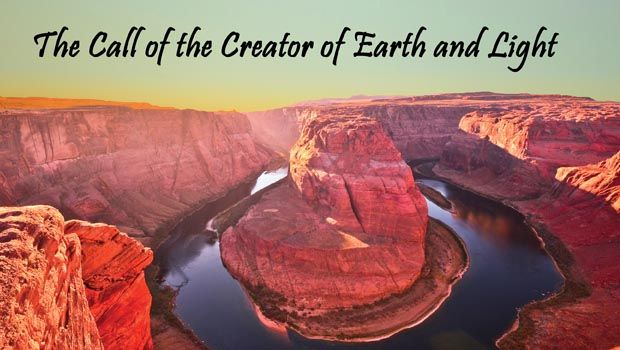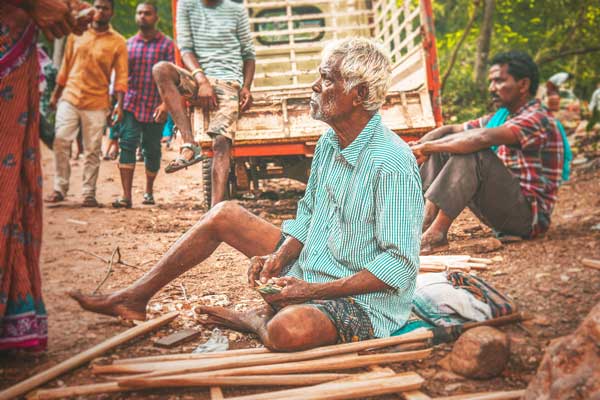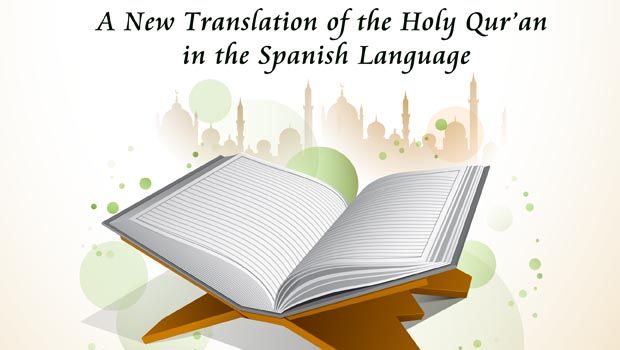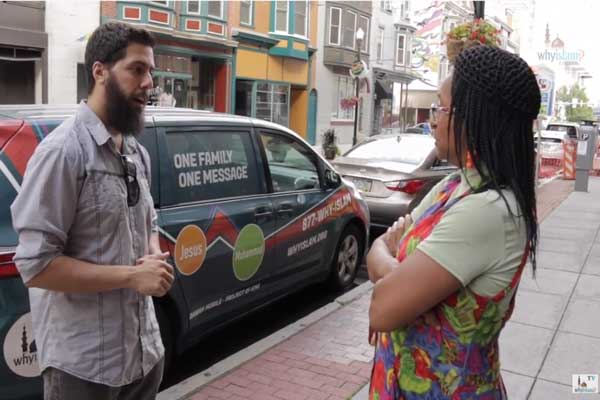Allah has revealed many verses in the Qur’an which advise us to travel and see the world (e.g. Qur’an 6:11). This, of course, is not a command to go on vacation constantly; rather it is meant as a learning experience. Allah tells us to look at former civilizations, the ruins of ancient days, to reflect upon the reality that no people or generation is permanent. When we realize that others have passed away before us, we begin to understand that we, ourselves, will be at most a memory for those who come after us (e.g. Qur’an 6:6).
When we arrived at the Grand Canyon and looked upon that great pit for the first time, both my wife and myself became nervous inside.
It had been a long time since I traveled and my wife and I arranged to take a trip from New York to Arizona. The lure of the Grand Canyon had found its way into our imaginations. Our flight from JFK was delayed, of course. From our hard waiting room seats we watched the Saudi Airlines pilots and flight attendants flirting, quite blatantly, with each other in their nearby lounge. I wondered if they become more Islamic during Hajj season. Insha’Allah I’ll find out one day.
When we finally arrived in Phoenix, Arizona, we were amazed to see that everything was cast in hues of sandstone and clay: the buildings, the ground, the people and the roads. We were truly in another land. The drive north to the Grand Canyon was pleasant enough, but given the high temperatures of the desert, thank God our rental car had a great air conditioner. It was amazing for me to see wide open countryside, baked to a crisp by the sun, with a small house here and there. How could anyone live in this hot place?
When we arrived at the Grand Canyon and looked upon that great pit for the first time, both my wife and myself became nervous inside. I hardly expected that I would feel shaken, but until you look down over a sheer cliff higher than the world’s tallest building, you can’t understand how we felt. It is truly awe-inspiring. (Not to mention there are no guard rails anywhere so one misstep and you’re history.) Given that we were over 7,000 feet above sea level, our breathing became difficult and we got out of breath easily. I remembered at that point the verse in the Qur’an where Allah mentions high altitude as related to the difficulty to breathe (Qur’an 6:125). In fact, I remembered so many ayaat during this trip and gained a greater appreciation of their full import that I might as well have been in school.
The Grand Canyon is truly an amazing sight to behold. The Colorado River carved out the 277-mile canyon over the course of five million years. The tour guides give you a little paper when you first arrive that describes the age of each exposed layer of rock. The upper layers are only a few hundred thousand years old, while the lowest layers are about two billion years old! I felt like nothing more than a passing ephemeron in the vastness of time! As I gazed over the multi-colored layers, the remembrance of another Qur’anic verse came to mind. Allah tells us that just as our colors and races are different and we can learn from that, so too is the earth filled with many colored layers which are also a sign of His power. Allah is telling us His earth is very old and took many ages to form and displays great diversity, even as humans and animals have variations in appearance (Qur’an 35:27-28).
There are many peaks, plateaus, and other geological formations in the canyon. They all have names too. You’d be surprised to know that some of them are named after pagan gods and folklore heroes of various ancient cultures. There is the Brahmin Temple, Cheops Pyramid, the Shiva Temple, the Vishnu Schist, the Buddhist Temple, the Zoroaster Temple, the Throne of Wotan (a Viking god) and about two dozen others. Earlier naming, in the 1800s was of the “folk” variety, such Bright Angel Creek or Lava Falls. The more “exotic” naming was introduced by Clarence Dutton in the 1900s.
If you’ve ever seen a dinosaur movie, then you can begin to imagine how we felt when we were at the bottom of the canyon. We took a raft ride down the Colorado River and truly felt we were in “The Land That Time Forgot.” We didn’t take a mule ride down the trails because we thought it was cruelty to animals after we saw how miserable the mules appeared in the noontime 118 degree heat. I wouldn’t want to have that mule accusing me on Judgment Day of having a nice scenic ride while he suffered the fierce temperatures! A park ranger later led our group to view some rock carvings left by the Anasazi Indians about a thousand years ago. To stand there and look upon what was once important to someone from long ago is quite humbling. The hands that made those stick figures and animal carvings are crumbled to dust. The next leg of our tour took us to the great Navajo Reservation. But first we passed through the Petrified Forest and saw trees that had turned to stone over the course of millions of years. Then we arrived at Canyon de Chelly, a lush labyrinthine valley in the process of re-vegetation, still inhabited by the Navajo to this day.
A jeep tour took us to see cliff-dwellings with their petroglyphs, made over a thousand years ago and long since abandoned. “In the traces left by (former peoples) you will learn wisdom” came to my mind. Every time I saw a new set of ruins, I tried to imagine what it was like long ago: full of people and the noise and bustling activity of everyday life. Real people in real homes. People just like you and me. But a few crumbling misplaced rocks or sun-dried mud bricks are all that remain of those communities with their countless souls. We also spent a lot of time on the Navajo Reservation. I was quite surprised to see churches all over the place. Even in the most desolate of areas I would spot some church or another. There were Mormon, Jehovah’s Witnesses, Catholic, Assembly of God, Pentecostal, Baptist, and a dozen other churches. We tried to do our part and left da’wah literature in every hotel we stayed at.
Something tugged inside my soul when I witnessed firsthand the contemporary legacy of a proud people. Many of the men whose faces mirrored the black and white photographs of their noble ancestors, revealed the shadowy ravage of alcoholism. Many of the Native Americans on the Reservation appeared to have become assimilated, trading their ancestral solidly grounded spirituality and cosmology for a diffused “do as you want to do” ethic of Western mass culture. I could tell there was a great cultural struggle going on in the society there. Half the Navajos dressed like cowboys (boots, cowboy hats, jeans and short hair) while the other half had traditional long hair and wore less identifiably Western dress. All the Navajo and Hopi radio stations play country and western music even though they have their own music. So complete was the assimilation process that it could be said that in some sections of the Reservation, Navajo identity is nearly just a quaint New Age feeling rather than a firmly grounded spirituality. In fact, I learned that most of the Native Americans in the region have abandoned the Reservations and now live in the big cities doing mostly menial labor. Crazy Horse and Geronimo’s legacy had indeed been abandoned, with only a small percentage still fighting to hold on to the traditions of their ancestors.
My wife and I discussed how a da’wah program might be started for Native American people. A group of dedicated brothers and sisters would have to actually come and live on the Reservation permanently, work there and become friends with the local people. A business venture would provide the perfect pretext for such an effort. Local people could be hired and shown how Islam blesses the relationship between owner and worker, and a Masjid could be built near the business or in town. Free classes on Islam could be offered and a tightknit family atmosphere could unite the Muslims and the new converts. Free housing could be provided to those who need it. Respect for native ways would be expressed in both word and deed and the Muslims would show what true brotherhood and sisterhood is all about.
What would be needed is a caring, understanding, knowledgeable, and dedicated person or persons to do da’wah among the Indians of Native America. Of course you need that for da’wah to anybody but especially with those who have been crushed completely by America, so much so that they now identify with their oppressors. Author Paolo Friere elucidates this strange master-slave process in “The Pedagogy of the Oppressed.”
The more I learned of Native American practices and beliefs, the more I saw how Islam would be wonderful to introduce here. If the blessed Prophet Muhammad can eradicate idol-worship in a pagan society, then we can at least attempt the same with a people who have mixed tribal paganism with Christian paganism. We have advantages as Muslims in this endeavor. Christian missionaries come in and say that all Native American beliefs and practices are from the Devil. Then they command that they must abandon their culture and become like Westerners to be saved. Islam, however, takes the basic attitude that there could be some truth in the beliefs of others, which might have come from authentic Prophets in the past. We don’t look to condemn others’ beliefs but rather seek to understand their beliefs (Qur’an 6:108). Then we can compare their teachings with Islam and gradually invite them to abandon whatever contradicts Islamic teachings and to affirm what truth they have which Islam promotes. The “Great Spirit” is Allah, we would teach, and there is no need for other spirits or gods between us and the Great Spirit. This notion was first fostered during a discussion I had with a Navajo Muslim brother in New Mexico a few years back. This brother stated to me: “The reason I became a Muslim is because Islam takes the traditions and conceptualizations of my people to a purer level. I believe that my Navajo identity is complemented by my Islamic beliefs and practices.”
Navajo, Hopi, and Apache traditional beliefs are filled with rituals that are performed every day. Wouldn’t it be easier to offer Islam to a people who will then be encouraged to retain their unique cultural characteristics and at the same time join the community of believers? All it requires is dedicated people. There are already a couple of Muslims from among the Navajos and others. Who will answer the call and set forth to call these people to Allah’s way? There is a unique task for everyone in this life. Beyond our daily affairs of work and family, Islam calls upon us to act on a higher level for the common good of ourselves and all of humanity. There’s one thing I learned on this trip and it is that we must all listen to our hearts and answer this call. Only when we act out our faith in the world around us do we become truly happy — we become the embodiment of our faith, internalizing the beliefs so that their light enters the heart.





